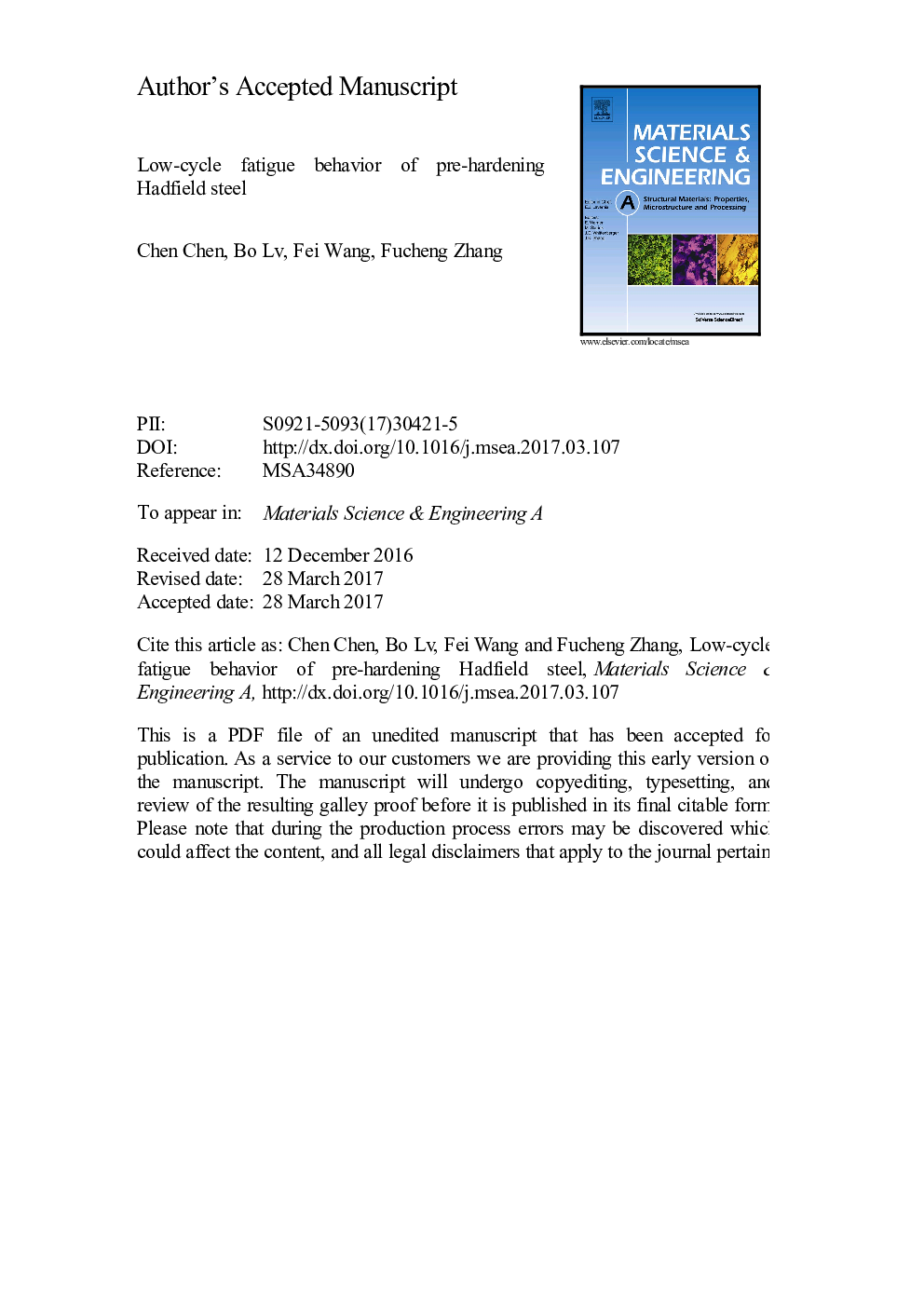| Article ID | Journal | Published Year | Pages | File Type |
|---|---|---|---|---|
| 5455710 | Materials Science and Engineering: A | 2017 | 19 Pages |
Abstract
Low-cycle fatigue behaviors of the pre-hardening (PH) and the water-quenching (WQ) Hadfield steel were studied using optical microscopy, transmission electron microscopy, and electron backscatter diffraction technique. The effect of the PH treatment on low-cycle fatigue behavior of the Hadfield steel was analyzed through comparing the cyclic hardening/softening behaviors and the changing regulations of stress amplitude, internal stress, and effective stress at different total strain amplitudes. Results showed obvious differences in fatigue behaviors between the PH (with a cold rolling deformation degree of 40%) and the WQ Hadfield steels. Transient hardening followed by cyclic stability behavior occurred in the PH Hadfield steel under cyclic loading, whereas cyclic softening behavior was barely observed. The fatigue life of the PH Hadfield steel was higher than that of the WQ Hadfield steel at relatively low strain amplitudes, while a contrary result was obtained at relatively high strain amplitudes. At low strain amplitudes, the deformation twins induced in the PH Hadfield steel could enhance the multiplication and slip process of dislocations, which actually improved the deformation uniformity. The long-range motion of dislocations was intensified at high strain amplitudes. However, the dislocation motion was also blocked by twin boundaries. As a result, the interactions between dislocations and deformation twins enhanced, finally causing severe dislocation accumulation. These two effects of deformation twins on dislocation motion eventually resulted in different low-cycle fatigue behaviors of the PH Hadfield steel.
Related Topics
Physical Sciences and Engineering
Materials Science
Materials Science (General)
Authors
Chen Chen, Bo Lv, Fei Wang, Fucheng Zhang,
